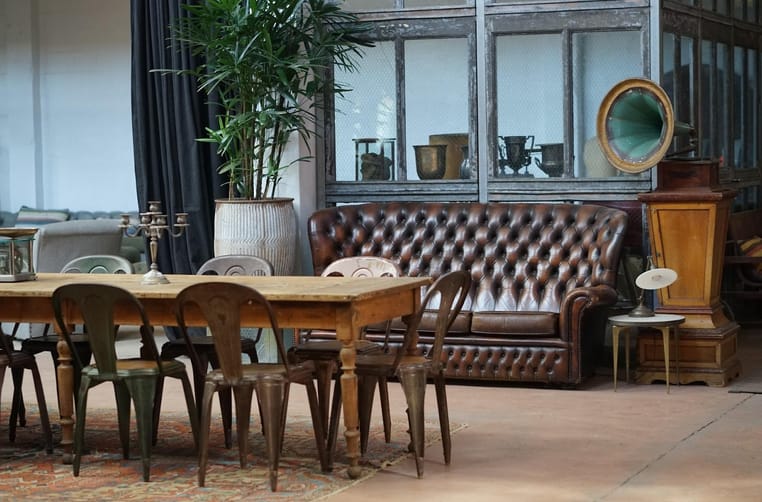A lot of issues could befall your stairs. They could be either loose, squeaky, or just falling apart. Either way, it might mean a lot to you because of their antique status, so you would want to restore them, so you don’t have to walk on your toes when going up and down the stairs. In this article, we will talk about the best ways of restoring your antique wooden stairs.

The Diagnosis
As we just mentioned, a lot of issues could befall your stairs. Sometimes you can even see the stairs starting to separate from the wall. In order to get the full capacity of the situation, you will want to first visually inspect the stairs. You can start by searching for any gaps in the stairs; then, you can walk on the stairs to get a feel for the movements. This way, you can feel exactly where the squeaking parts are located in.
After you have located the epicenter of the problem, you will need to remove the paneling or the plaster (depending on what you have) in order to work on solving the problem. Usually, this will include ripping off the 2x4s on the sides, which can be a bit irritating, but what can you do? Once you have removed all of these things, you can clearly see the stairs’ innards. Then comes the easiest part.
This is one way of doing it, there is another, more delicate way of approaching the problem.
The Delicate Solution
Sand Down the Treads
If you want to get a more delicate solution around restoring the antique stairs, you will want to start the process by sanding down the treads to the elemental wood. This will involve a combo of hand sanding and power sanding. This way, you can get around the hard-to-get corners and around the balusters on the stairs. If you are having difficulties around the corners, it is recommendable to use a scraper.
Clean Up Time
In order to make the stairs cleaner and make sure no dust gets caught in between the staircases, you will want to vacuum between the passes. This way, you will get rid of all the dust and debris and make sure there is no dirt left between the treads and the sandpaper. The problem with sanding over dust and dirt is that it can create a lot of tiny scratches that will become very apparent once the final finish is laid down.
Sand Down the Treads (Again)
After the finish has been completely removed, and you have reached the bare wood, you can repeat the process with a 120-grit sandpaper.
Clean-Up Time (Again)
Yep, the process requires quite a bit of repetition. But this is the best way of maintaining the old feel that the antique stairs have. Start by vacuuming the treads and after you’re done, wipe them with a tack cloth. We don’t recommend using wet cloth because you will cause the grain to rise. At this point, you will have gotten the hang of it and can even consider doing it as a business!
Wood Treatment
If you want to change the color of the tread, you should first apply a wood conditioner. Afterward, apply an oil-based stain with a cloth from cotton. Now, you need to make sure that all of the finish is completely gone, if there is still finish left, the stain will not be able to absorb properly. This is where the wood conditioner comes into play. It makes sure that the stain penetrates the wood. After about fifteen minutes of sitting, you can remove any unnecessary conditioner with the help of a lint-free cloth.
Staining the Treads
You can apply the strain by using a staining pad, a lint-free brush, or a regular brush. Afterward, wipe down the tread with a lint-free cloth in order to remove any extra stains. Then, allow the stain to dry for twelve hours (we recommend that you let it dry during the night so that you can work and use the stairs during the day).
Applying a New Layer of Finish
After you are done with the staining, you should apply a coat of polyurethane (preferably a water-based one) to the antique stairs with the use of a paintbrush. Water-based polyurethane is a better choice because it dries significantly faster between coats than non-water-based ones. They are also, generally, a lot easier to use as well. Afterward, you want to apply the polyurethane with a high-quality brush in one corner, and then go across the tread. In order to avoid bubbles from forming, you must do this process slowly. Allow the applied polyurethane to dry for a few hours. This can seem pretty tricky at times, and there is a chance of messing up. Thankfully, Sydney Mobile French Polishing offers exquisite services in this regard, so if you want the pros to handle it, you know whom to call.
Sand it Again (the Final Time)
After the coat of polyurethane has dried out, sand the surface lightly by hand, then vacuum it and wipe it down with a tack cloth. And that would be it. Afterward, your antique stairs will be as good as new ones. We hope that you have learned a lot from reading this article. Best of luck, and see you next time!




Recent Comments